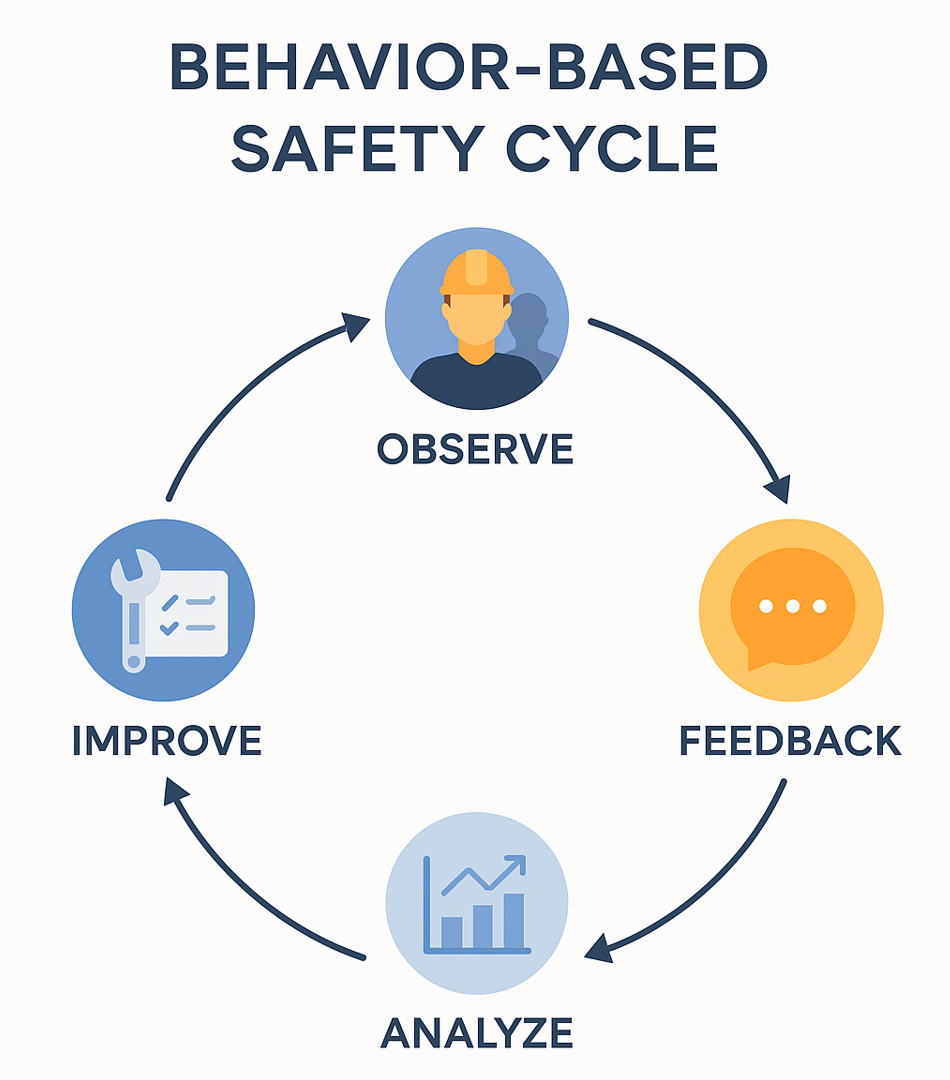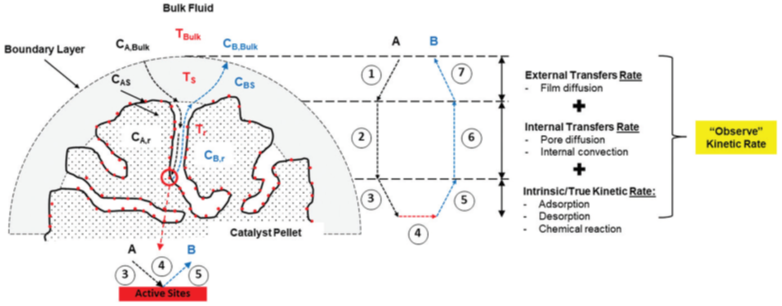Behavior-Based Safety (BBS) is a proactive, data-driven approach to improve workplace safety by focusing on workers’ behaviors and actions. The underlying principle is that while engineering and procedures create a safe work environment, it is human behavior that often determines whether accidents occur. BBS programs seek to encourage safe behaviors (like wearing PPE correctly, following lockout procedures, driving cautiously on site) and discourage at-risk behaviors (such as bypassing a guard or rushing and taking shortcuts). This is done through a systematic process of observation, feedback, and positive reinforcement. For example, trained observers might watch workers during routine tasks and record both safe and unsafe practices. They then give immediate, constructive feedback – praising safe actions and discussing unsafe ones to understand why they occurred and how to avoid them. Over time, these observations generate data on trends, which can be analyzed to identify common risky behaviors or situations. The goal is to address the human factors that contribute to incidents by understanding why people might deviate from safety procedures and removing barriers to safe behavior. A successful BBS program creates a proactive safety culture by getting everyone involved in looking out for safety and continuously improving habits.
A Behavior-Based Safety program typically involves several core components. First, there is observation and measurement: companies develop checklists or forms to guide observers on what behaviors to look for (tailored to their specific high-risk activities). For instance, in a warehouse a checklist may include “uses proper lifting technique” or “checks forklift horns before reversing.” Observations can be done peer-to-peer or by dedicated safety personnel, and they should be regular and ongoing. Second, feedback and coaching are crucial. Rather than discipline, BBS emphasizes coaching – when an unsafe act is observed, the observer might have a friendly conversation, “I noticed you climbed that ladder with tools in hand; let’s talk about using a hoist or tool belt to keep you safe.” Positive behaviors are praised to reinforce them. This immediate feedback loop helps employees become more aware of their own safety behavior. Third, employee involvement and trust form the foundation. BBS only works if employees trust that the program is not about blaming individuals but about working together for safety. That’s why management must openly support BBS and act on findings without punitive measures for reported behaviors. Often, BBS programs establish safety teams or steering committees that include workers, who help set behavioral targets and participate in program design. Data from observations is analyzed to identify trends and root causes of unsafe behaviors – maybe a particular department has more unsafe acts due to production pressure, or a certain time of day shows lapses due to fatigue. Interventions can then be made, such as additional training, adjusting workloads, or other system changes. Over time, as unsafe behaviors decrease, the program might set new goals (for example, increasing the number of safe observations or expanding the checklist as improvements are made). The ultimate aim is continuous improvement, driving the incident rate down by systematically addressing behavioral causes.
OSVARD helps organizations in Asia design, roll out, and sustain effective Behavior-Based Safety programs. We start by assessing the company’s safety culture and identifying readiness for BBS – it’s important that management is committed and that a blame-free mindset can be adopted. Our consultants then work with you to define the critical behaviors that need focus. These are often derived from past incident analyses or known risk activities. For example, in a construction company, critical behaviors may include wearing harnesses at heights, proper lockout-tagout during maintenance, or safe lifting. OSVARD will assist in developing observation checklists tailored to these critical behaviors and train a group of observers (which can include supervisors and volunteer employees). We emphasize effective communication skills so that feedback given is positive and constructive, not confrontational. As the BBS program launches, OSVARD provides on-site support and coaching; we might shadow initial observations, help facilitate feedback sessions, and ensure data is being recorded correctly. We also guide the formation of a BBS steering committee that meets regularly to review observation data and drive action items. Because maintaining momentum is a common challenge, OSVARD recommends integrating BBS into existing safety meetings and recognition programs. We help clients establish metrics (such as number of observations per week, ratio of safe to unsafe acts, etc.) and set realistic improvement targets. Over the months, our team will help analyze the data for insights – perhaps identifying that most unsafe observations occur during a certain shift or specific task – and we’ll work with you on solutions, whether that’s further training, engineering fixes, or leadership interventions. Through OSVARD’s support, companies see tangible results: a reduction in incident rates, increased reporting of near-misses, and a stronger safety culture where employees actively care for each other’s safety. Ultimately, Behavior-Based Safety becomes part of “the way we work,” leading to sustained performance where safety is everyone’s responsibility.

SafetyCulture – BBS is a proactive approach focusing on worker actions; it aims to reduce hazards by observing behavior and reinforcing desired safe practicessafetyculture.com.
Vector Solutions – Behavior-Based Safety creates a proactive safety culture by addressing human factors; influencing behaviors can significantly reduce accident riskvectorsolutions.com.
Vector Solutions – Examples of BBS implementation include observation with immediate feedback, near-miss reporting analysis, and regular safety training to ingrain safe behaviorsvectorsolutions.com.












